Considerations over the institution of the Caliphate and the “Justice” in Islam
by Enrico Galoppini
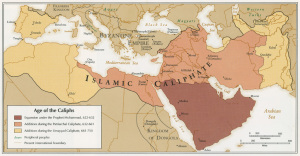 The institution of the Caliphate (Arabic khilafa, “vicegerency”) emerges in Islamic history immediately after the death of the Prophet Muhammad (632), who had not designated any of his comrades for the guidance of the newly formed community of the believers (umma). Therefore, he was succeeded by the so-called “orthodox caliphs” (al-khulafâ ‘ar-râshidûn) [1], who in the course of thirty years or so, while the struggles between different factions were exploding, thy faced the daunting task of organizing the endless domains incorporated by Islamic state. These caliphs, in their capacity as “vicegerents of the Messenger of God” (khulafâ’ rasûl Allâh), were all elected (in different ways), while starting from 661 there was established a dynastic regime of the Umayyad (ad-dawlat al-umawiyya) [2], a symbol of the return to power, under the new brand-name of Islam, of the pre-Islamic Meccan merchant aristocracy, in which the Banû Umayya were an influential clan. This dynasty was succeeded, from the middle of the eighth century, and until the Mongol invasion in the middle of the thirteenth century, by the ‘Abbasid dynasty (ad-dawlat al-‘abbâsiyya), which already a century after its establishment had to confront Turk and Iranian “sultans” and “emirs” to whom they granted, unwillingly, part of the power. While in the tenth century Islamic history presents us with the case of three competing caliphates: those of Baghdad (‘Abbasids), Cairo (Fatimids, previously Mahdiyya, located on the Tunisian coast) and Cordova (Umayyad, exiles after the loss of Damascus). Later, from the sixties of the thirteenth century, there had survived a simulacrum of an ‘Abbasid Caliph at the court of the Mamlûk sultans of Cairo, and finally, from 1517, with the advent of the Ottomans in Egypt, the institution was abandoned, dusted – and distorted – only for the reasons of prestige and propaganda (“pan-Islamic”, for Muslims who fell under a non-Islamic power) in the second half of the eighteenth century [3]. The Republic of Turkey, in 1924, had also ended the discussion over the “Ottoman Caliphate”. The issue then would become a center of attention of Muslim intelligentsia, especially “reformists” (eg. Rashîd Ridâ [4], ‘Ali ‘Abd al-Râziq [5]), during all the twenties and thirties of the twentieth century, without that there might have come any concrete proposal.
The institution of the Caliphate (Arabic khilafa, “vicegerency”) emerges in Islamic history immediately after the death of the Prophet Muhammad (632), who had not designated any of his comrades for the guidance of the newly formed community of the believers (umma). Therefore, he was succeeded by the so-called “orthodox caliphs” (al-khulafâ ‘ar-râshidûn) [1], who in the course of thirty years or so, while the struggles between different factions were exploding, thy faced the daunting task of organizing the endless domains incorporated by Islamic state. These caliphs, in their capacity as “vicegerents of the Messenger of God” (khulafâ’ rasûl Allâh), were all elected (in different ways), while starting from 661 there was established a dynastic regime of the Umayyad (ad-dawlat al-umawiyya) [2], a symbol of the return to power, under the new brand-name of Islam, of the pre-Islamic Meccan merchant aristocracy, in which the Banû Umayya were an influential clan. This dynasty was succeeded, from the middle of the eighth century, and until the Mongol invasion in the middle of the thirteenth century, by the ‘Abbasid dynasty (ad-dawlat al-‘abbâsiyya), which already a century after its establishment had to confront Turk and Iranian “sultans” and “emirs” to whom they granted, unwillingly, part of the power. While in the tenth century Islamic history presents us with the case of three competing caliphates: those of Baghdad (‘Abbasids), Cairo (Fatimids, previously Mahdiyya, located on the Tunisian coast) and Cordova (Umayyad, exiles after the loss of Damascus). Later, from the sixties of the thirteenth century, there had survived a simulacrum of an ‘Abbasid Caliph at the court of the Mamlûk sultans of Cairo, and finally, from 1517, with the advent of the Ottomans in Egypt, the institution was abandoned, dusted – and distorted – only for the reasons of prestige and propaganda (“pan-Islamic”, for Muslims who fell under a non-Islamic power) in the second half of the eighteenth century [3]. The Republic of Turkey, in 1924, had also ended the discussion over the “Ottoman Caliphate”. The issue then would become a center of attention of Muslim intelligentsia, especially “reformists” (eg. Rashîd Ridâ [4], ‘Ali ‘Abd al-Râziq [5]), during all the twenties and thirties of the twentieth century, without that there might have come any concrete proposal.
Already in the transition from the conception of the elective Caliphate to the establishing of the dynastic principle it is possible to see a pivotal moment in Islamic history. In light of today’s intense – and often improvised – debate on “Islam and Democracy”, one of the first questions that arise whenone reflects over the issue, is that concerning the “democratic” character (the term should be taken with a pinch of salt) of the Caliphate institution and the model of government that derives from it: to find an answer you will have to investigate in detail the practice of the government of the first four caliphs, the way they understood their task and, above all, forms of legitimization of their power.
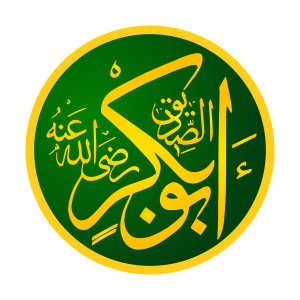 The example of the first Caliph Abû Bakr (632-634) is very instructive in this regard. Once elected, he said in his khutba (“speech”) of accession: “I was chosen (charged), but I am not the best among you; […] The weak among you is strong because I will defend his rights, and the strong among you is weak to me. […] Obey me as long as I obey God and His Messenger, but if I disobey God, you do not have to obey me”. The father-in-law and friend of the Prophet uttered then a very significant sentence: “If I do well, support me, if I deviate, put me on the right track” (the exact expression is taqawwum al-mu‘wajj, “straighten the one who deviates”, and a‘waj, “cripple” is from the same root, will be exactly an epithet of Dajjâl, which we will return to in the end) [6]. Qur’an and Sunna (virtuous example of the Prophet) are, from the beginning, the ‘constitution’ of the Islamic state: “O, you who believe, obey Allah and the Messenger and those of you who hold the authority. If ye disagree in anything, refer it to Allah and the Messenger, if you believe in Allah and the Last Day. It is the best way and the safest interpretation “(Qur. IV, 59) [7].
The example of the first Caliph Abû Bakr (632-634) is very instructive in this regard. Once elected, he said in his khutba (“speech”) of accession: “I was chosen (charged), but I am not the best among you; […] The weak among you is strong because I will defend his rights, and the strong among you is weak to me. […] Obey me as long as I obey God and His Messenger, but if I disobey God, you do not have to obey me”. The father-in-law and friend of the Prophet uttered then a very significant sentence: “If I do well, support me, if I deviate, put me on the right track” (the exact expression is taqawwum al-mu‘wajj, “straighten the one who deviates”, and a‘waj, “cripple” is from the same root, will be exactly an epithet of Dajjâl, which we will return to in the end) [6]. Qur’an and Sunna (virtuous example of the Prophet) are, from the beginning, the ‘constitution’ of the Islamic state: “O, you who believe, obey Allah and the Messenger and those of you who hold the authority. If ye disagree in anything, refer it to Allah and the Messenger, if you believe in Allah and the Last Day. It is the best way and the safest interpretation “(Qur. IV, 59) [7].
A similar survey should be carried out for the subsequent caliphate dynasties, for which one more issue to consider is the influence of the Greek-Byzantine and Iranian imperial models. For this reason, in the field of the general study on the Caliphate, there should be reserved a space for a comparison between different epiphanies of the idea of Empire [8], or at least those that have particularly influenced the practice and conception of the power of caliphs of Islam. In this context, it should be noted that the last great Islamic dynasty, Ottoman, while not claiming the title of caliphate considered itself invested with the imperial title because of being in possession of Constantinople, “the seat of the Empire” [9] .
One aspect is of great interest for deepening theknowledge of this institution is the coexistence in the figure of the Caliph of the two functions: “royal”, “command” (imâra), and “priestly” (imâma). As imam the Caliph guides both the prayer and the hajj, the pilgrimage to the “House of God”, in Mecca; as amîr al-mu’minîn (commander of the believers), he is the one who must lead the ghazawât, military campaigns, in which the “lesser jihad” is carried out, the one in arms against the aggressors, but also against an “unfair” power (while the “greater jihâd” is that which everybody carries out – “with the help of Allah” – against the lustful soul).
The “Justice” (‘adâla) is, not surprisingly, considered in all the theological treatises in the second place after tawhîd (divine Unity and Oneness). The Caliph – who is the only one because thereis the only one law- must therefore be essentially “fair” (‘âdil). But in what sense? If the supreme head of the umma is Allah, the supreme Lawgiver, the Caliph’s is only a holder of a public office in order to ensure respect and enforcement of His revealed law (sharî’a) through the courts (qudât), with no legislative nor dogmatic power[10]. First of all he has to submit himself to the Law, and ‘ulamâ’ (the “scholars”), in their fundamental independence (there does not exist, “providentially”, a state priestly caste), who ensure that the power of the Caliph would not spill into zulm (“oppression”), which occurs when human action (including that of the Caliph!) is not bound to the sharî’a and falls in bid‘a, the “personal innovation”(in the management of public affairs), of which various caliphs were accused with [11]. In this context, an eloquent maximum is often remembered which is Lâ tâ‘a li-makhlûq fî ma‘siyyat al-Khâliq (“Let there be no obedience to a creature who rebels against his Creator”), while another one well-defines the concept of “justice” of the Caliph: al-hukm bi-mâ anzala Allâh wa îsâl al-haqq ilâ mustahiqqi-hi fî aqrab al-waqt (the government by means of which Allah has sent down [i.e. the Qur’an] and the allocation of the law to the person entitled in the shortest possible time).
The lack of a successor designated by the Prophet, instead of being a “problem”, is rather an indication that the right to choose or dismiss him belongs to the community, represented by Ahl al-hall wa al-‘aqd (“those who [have the power to] release and bind [the mandate]”: a sort of “great electors”). They, after making a wise “choice” (ikhtiyâr), provide bay‘a (“covenant”) on behalf of all the people [12].
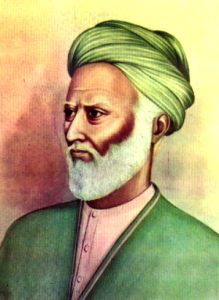 This is the model, although the “theory of the caliphate” has been set significantly only after the Caliph (‘Abbasid) had lost much of his power – we would say “political” – for the benefit of “emirs of the emirs” and “Sultans”, Turkish and Iranian (Ghaznavids, Buyids, Seljuks etc.) [13]. A comprehensive research on the institution of Caliphate should therefore provide a broad overview of the political-juridical elaboration culminated with the Treaty of Al-Mâwardî (d. 1058) Al-ahkâm al-sultâniyya (“The principles of power”), in which there are fixed the conditions for eligibility of the Caliph, his defines duties towards the umma are defined (the central concepts are of amâna, “good governance” [14], and ‘adâla, “justice”) [15]. This is, in short, the idea of the majority of Sunni, although therealso deserve some attention the conceptions of power of the various “Muslim minorities” (Twelver Shiites, Ismailis, Kharijites etc.) [16].
This is the model, although the “theory of the caliphate” has been set significantly only after the Caliph (‘Abbasid) had lost much of his power – we would say “political” – for the benefit of “emirs of the emirs” and “Sultans”, Turkish and Iranian (Ghaznavids, Buyids, Seljuks etc.) [13]. A comprehensive research on the institution of Caliphate should therefore provide a broad overview of the political-juridical elaboration culminated with the Treaty of Al-Mâwardî (d. 1058) Al-ahkâm al-sultâniyya (“The principles of power”), in which there are fixed the conditions for eligibility of the Caliph, his defines duties towards the umma are defined (the central concepts are of amâna, “good governance” [14], and ‘adâla, “justice”) [15]. This is, in short, the idea of the majority of Sunni, although therealso deserve some attention the conceptions of power of the various “Muslim minorities” (Twelver Shiites, Ismailis, Kharijites etc.) [16].
Once more to respond to those who detects – often bona fide because he is influenced by the modern prejudices – a ‘democratic deficit’ in the institution of caliphate, one of the main objectives of a study of this kind should cover a clarification on the actual power of the “people” in the selection and revocation of a Caliph, meanwhile in theory (and in the example of the “orthodox caliphs”) there is established the presence of an elective assembly (shûra) [17], a task of monitoring the activities of the Caliph [18] and the opportunity to object (mu‘ârada) to an “unfair” power, in practice this hadbeen difficult to achieve, and indeed there were theologians and ‘political theorists’ who have endorsed quietist trends that discouraged, or even condemn the “rebellion” [19].
The question of obedience to the Caliph is closely tied to the “consent” to those who carry out “what the community expects”, or the “good practice” compendium of shared values indicated (even in pre-Islamic age) [20] with a term ma‘rûf: “known”– it is very significant. The Qur’an, moreover, imposes insistently al-amr bi-l- ma‘rûf wa al-nahy ‘an al-munkar (Order the Good, Justice – or the “good practice” – and forbid the Evil, Injustice – that is what it denies). Therefore, the link between ma‘rûf and sharî‘a is evident in the management of public affairs in Islam.
In Islam, all the problems of government are brought back reverted within the revealed Law: the question of the “legitimacy” of the Caliph is, thus, laying the “legal” foundation for the “political” intervention of the Caliphs. Futhermore, the prerogatives of the Caliph are included in their full range if they are considered in an organic relation with respect to the Qur’an and the hadîth (traditional regulations attributed to the Prophet) relating thereto. Both, as noted above, are the “Constitution” of the Islamic state [21].
An in-depth investigation of the Caliphate should then be able to determine whether the exercise of power in Islam is one of the “forms of religion” or rather whether “the indissoluble union” of dîn (“religion,” very loosely translated) and dawla (“State”, also improper) is not, in hindsight, yet another misconception about Islam, rather Islam seeking a balance between these two instances, as well as the balance is constantly sought in the relationship between the rulers and the ruled. Therefore, in the light of Qur’anic passages and hadîth regarding the exercise of power and the relationship between the rulers and the ruled, it is interesting to see to what extent this ideal (non-utopian) was achieved and, above all, to understand whether the fact that the Qur’an talks little about politics is probably another false problem, because the Caliph is not, in fact, a “politician”.
It is also important to specify that some of the tasks of the caliph are indeed “religious” (prayer leading and the pilgrimage to Mecca), but fall within his powers as long as they concern the public order: therefore it is not about the presence of a “mingling of religious and civil”, as about a synthesis that contemplates two areas that the modern Western secularism considers separately and/or conflictive. That said, it is of considerable interest to investigate – reading the various Muslim authors who, from various angles, have discussed (Ibn al-Muqaffa‘, Abu Yûsuf Ibn al-Athîr, al-Jâhiz, al-Bâqillânî, al-Juwayni, Ibn Jamâ‘a, al-Fârâbî, al-Ash‘arî, Ibn al-‘Arabî, al-Mâwardî, al-Ghazâlî, Ibn Taymiyyah, Ibn Khaldûn, etc.) the link between the prerogatives and duties of the Caliph and instances on which the Qur’an insists more: again, the “Justice”, rather than “Freedom” on which the very “modern thought” lingers.
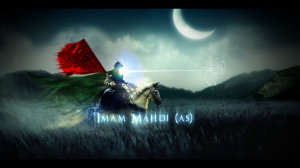 A final consideration is imposed to return all the complexity of the topic. The Qur’an contains the word khilâfa in relation to Adam – the first “bodily Father”, or the initiator of this “cycle of humanity” -, who lives only apparently through a “fall” from the Earthly Paradise, because in such a way he “perfects his knowledge” and takes the place of God in creation (khalîfa ‘ala sûrati-Hi, “Vicar in His image”), so that in front of him even the angels must prostrate (II, 30). And also contains in relation to David, archetype of royalty [22]. For the Islamic tradition, even the Prophet Muhammad is also a “Caliph” as long as he is the “Father of the Spirits” (Abû al-Arwâh). The question of the Caliphate, therefore, is intertwined with that of the relationship between man and the prophets, kings and prophets, but also with eschatology, as the question relates to the coming of the Mahdî, or the one who will restore Justice on the Earth after the advent of the Dajjâl (al-Masîh ad-Dajjâl, the “imposter Messiah”, “the Antichrist”), since he will be “the last Caliph of God” (and not, note, “caliph of the Messenger of God”), given that his government will truly be “compliant with the divine Order” decreed in the Qur’an [23].
A final consideration is imposed to return all the complexity of the topic. The Qur’an contains the word khilâfa in relation to Adam – the first “bodily Father”, or the initiator of this “cycle of humanity” -, who lives only apparently through a “fall” from the Earthly Paradise, because in such a way he “perfects his knowledge” and takes the place of God in creation (khalîfa ‘ala sûrati-Hi, “Vicar in His image”), so that in front of him even the angels must prostrate (II, 30). And also contains in relation to David, archetype of royalty [22]. For the Islamic tradition, even the Prophet Muhammad is also a “Caliph” as long as he is the “Father of the Spirits” (Abû al-Arwâh). The question of the Caliphate, therefore, is intertwined with that of the relationship between man and the prophets, kings and prophets, but also with eschatology, as the question relates to the coming of the Mahdî, or the one who will restore Justice on the Earth after the advent of the Dajjâl (al-Masîh ad-Dajjâl, the “imposter Messiah”, “the Antichrist”), since he will be “the last Caliph of God” (and not, note, “caliph of the Messenger of God”), given that his government will truly be “compliant with the divine Order” decreed in the Qur’an [23].
The Islamic esotericism indicates that authentic Imperium will be risen only by one who has realized inbisât and ‘urûj (“width” and “exaltation”), which correspond respectively to the royal function, whose scope is the manifested world (‘âlam ash-shahâda), and the priestly, which has relevance to the unmanifested world (‘âlam al-ghayb). The function of the Caliph is therefore the same as of an Emperor, or that of the Pope (understood in its true sense), and symbols of these two complementary achievements can be found in all traditions, the symbolism of the Cross to the Mi‘râj (or “rise” of the Prophet, mentioned in Sûra XVII) [24].
For about a century after the abolition of the so-called “Ottoman Caliphate” by those who had no title to rule on this matter [25], Islam has not had a Caliph. Is, thus, Islam “orphan of the Caliph”? In other words, is the Caliphate an institution necessary as I long as Islam is alive and active, and does the defence of the umma from all forms of danger – according to various theologians – justify the jihad? Or the Caliphate is a closed question that will be reopened, along with the restoration of Justice, only in the “end of times”?
FOOTNOTES
[1] Abû Bakr as-Siddîq (632-634), ‘Umar ibn al-Khattâb (634-644), ‘Uthmân ibn ‘Affan (644-656), ‘Alî (656-661).
[2] The term dawla, often translated as “state”, implies instead the idea of “alternation”. Islamic history is therefore not a story of “states”, as it is however, the European one.
[3] Treaty of Küçük Kaynarca, including ‘Abd el-Hamîd I and Catherine of Russia (1774).
[4] Al-Khilâfa aw al-Imâmat al-‘uzmâ [The Caliphate or Imamate supreme], al-Qahira 1922.
[5] Al-Islâm wa Usûl al-hukm [Islam and the sources of power], al-Qahira 1925.
[6] ‘Afîf ‘Abd al-Fattâh Tabbâra, Rûh ad-dîn al-Islâmî [The spirit of Islamic Religion], Dar al-‘ilm li-l-malâyîn, Bayrut 1995, p. 342.
[7] In the translation by H.R. Piccardo, with revision and doctrinal control of the UCOII, Newton & Compton, Rome 2003. Qur’an and Sunna are also, significantly, the first two “sources of the Law” (Usûl al-fiqh).
[8] See. C. Mutti, Imperium. Epifanie dell’idea di Impero [Imperium. Epiphanies of the idea of Empire], Effepi, Genoa 2005. Note that Selîm I, conqueror of Egypt (1517), would not attribute any importance to the presence of the “Caliph” ‘Abbasid at the Mamlûk court.
[9] See. C. Mutti, Roma dopo Roma [Rome after Rome], “Eurasia”, 1/2004, pp. 95-108.
[10] To the Caliph remains the jurisdiction of Appeal and the power to settle disputes between administrators and administered.
[11] Among other things, the protection of religion from bid‘a (with the help of ‘ulamâ’) is just one of the tasks of the Caliph, who must defend it even from “enemies” (mu‘tadûn), although sometimes the “enemy” has been presented as such because … it was an opponent dynasty! It is also noteworthy that the third “source of law” is placed directly in connection with the ‘‘ulamâ’, from which originates so exalted institutional role of “counterweight” and reaffirmed the pre-eminence within the doctrinal sphere, compared to caliph: it is the ijmâ‘, or “consensus” of the “learned” representatives of the umma.
[12] Since the Umayyad Caliph ‘Abd al-Malik (685-705) will be indicated the successor through the institution of the walî al-‘ahd (recipient of the ‘contract’): the bay‘a thus becomes more and more a formality. Note also that ikhtiyâr (“choice”) has the same root as khayr (“good”, “better”): the signs of the Time is that “the worst will rule” …
[13] As we have seen, the Caliph is the summit of the Army (jaysh), and it is he who chooses the chiefs, who used to be initially revoked. But military leaders gradually will hold the actual strength and financial power (such as tax collectors); hence emerges the figure of Amîr al-Umarâ’ (“Emir of the emirs”, 935-1055), from 945 a real dynasty (Iranian Shiite, of Buyids dynasty), but with the Caliph that will keep control of the judicial sphere.
[14] Al-Amîn, “worth of trust” (the same root as amâna), was the epithet of young Muhammad. Among the “good governance” are included the public office, the state money, the rights of individuals and communities.
[15] These, in brief, the conditions for eligibility of a Caliph: 1) Justice; 2) Science of the governmental and administrative matters; 3) senses in good condition: hearing, sight and speech; 4) Healthy parts of body: able to move and stand up; 5) Know how to administer the subjects and take measures of general interest (maslaha); 6) Courage and bravery in protecting the watan (the “Homeland”, the “Fatherland”, but also the place where you reside) and lead the jihad against the enemy; 7) descent from Banû Quraysh (the clan to which Muhammad also belonged): for some theorists it became anexceeded condition, although rarely some spoke of a‘jâm (“non-Arab”).
[16] The Twelver Shia insist on the rights on imamate by the members of the Family of the Prophet (as a direct descent from ‘Alî and Fâtima): Muhammad himself would invest ‘Alî in Ghadîr Khunn, so much so that the Shiites celebrate this anniversary. For the Fatimids (909-1171), Ismaili Shiites, the caliph had the ‘isma (“infallibility”): he is the interpreter of the law, the source of knowledge and walî Allâh (“friend of Allah”), so in 1017 the caliph al-Hakim was proclaimed “incarnation of gods”; the appointment of the successor (from father to son) was not announced until the death of the deceased caliph. The Zaydis (descendants of a grandson of Muhammad, al-Hasan), since 901 in Yemen, attributed themselves the titles of amîr al-mu’minîn and al-hâdî ilâ l-Haqq (“He who guides to the Truth”), but does not have the ‘isma; just endowed with “science” and “warrior” virtues, who stated that the succession does not happen from father to son, relying instead on the quality of the successor. For the Kharijites, finally, the Caliph must be simply the most deserving, in the sense of “most honest Muslim”.
[17] Shûra has the same root as tashâwur (“consultation”): the choice of the Caliph is based on the principle of tashâwur fî man huwa ahaqq bi-riyâsati-hâ (“consultation on who has more right to lead it [the umma]”).
[18] al-Haqq ishrâf ‘ala al-hukûma (lit. “Right to supervise the [activity] of Government”), which refers to Kullu wâhid min al-Umma fî mâ yarâhu akhtâ’ fî-hi (to “each member of the Community that identifies errors”), while the judgment (muhâsaba, lit. “settle accounts”) is up to the afore mentioned Ahl al-hall wa al-‘aqd.
[19] “Obey Allah and the Messenger and those of you who have the authority […]” (I Qur. IV, 59). Based on the reference to “those of you” there are those who have argued that a Muslim does not owe obedience to a non-Muslim power.
[20] See. Galoppini E., Gli Arabi prima dell’Islam [The Arabs before Islam], “Rinascita”, November 24-25, 2007, pp. 10-11 (http://www.rinascita.info/cc/RQ_Cultura/EEAyplyVuVTWalOzUx.shtml).
[21] Here there is no space for all the insights that the topic would require, but it is sufficient to note that in the function of Amîr (“royal”, “command”) the Caliph constitues, in addition to the heading of the Army, also the heading of the Government (hukûma, from a root that means the concepts of “judgment” and “wisdom”). But over time there emerge secretaries and wazîr (“Ministers”, initially revocable) because progressively the Caliph disregards the conduct of the affairs of government. Similarly, there had arisen the demands for independence by the governors of the provinces (wilâyat), who from the beginning of the ‘Abbasid period (750-1258), starting from the peripheral regions (eg. Ifrîqiyâ, with Aghlabids, from ‘800), will become de facto autonomous dynasties (although recognizing the supreme authority of the Caliph). From that point on, the history of the caliphate institution unfolds – apart from some attempts to “restoration” operated by some Caliphs – in a progressive loss of its prerogatives: the ‘hostage’ Caliph in Cairo at the Mamlûks, who gave the “investiture”, will also lose the power to coin money (sikka, “mint”) and will not be the one who utters the khutba (“speech”) during the Friday prayer.
[22] “O David, we made you a vicegerent on earth: judge with equity between men and do not tilt your passions, because they mislead you from the path of Allah.”Surely those who turn away from the Path of Allah, suffer a severe punishment for having forgotten the Day of Reckoning”(Qur. XXXVIII, 26).
[23] On these aspects there is a crucial long essay by Paolo Urizzi Regalità e Califfato [Kingship and Caliphate], cited in the bibliography that follows.
[24] For understand the eschatological aspects related to the caliphate institutionis very important is the eighteenth sûra al-Kahf (“the Cave”), central in respect to the Qur’an, which contains, among others, “the story of a group of young people who abandoned their cities and retreated to a cave to escape persecution of a “pagan” tyrant, who wanted to force them to recant their belief. […] I vv. 83-98 speak of “Bicorne”, that most commentators identify with Alexander of Macedonia, based on an Envoy of Allah words: “… it is the Greek who founded Alexandria” (Tabari XVI, 8). The Bicorne ranges between the extreme horizons of the land bringing a message of faith, justice and knowledge and reaches the limits of the known world, where Gog and Magog live. The Bicorne imprisons those creatures that have subhuman characteristics and seem to represent all animality inherent in an individual, raising a range of iron coated with copper, behind which they will remain confined to the day when, in final times, they will swarm from every slope”. The Qur’an., cit., p. 253. In the case of the Cave inhabited by the “sleeping” it is essential the presence of “their dog” (the Ghibellines Greyhound?), who “was in the doorway, his legs stretched out” (XVIII, 18), which means that even in the moment of extreme concealment of tradition there will be those who will remain awake and will have consciousness of the transition to a new “cycle” (Islamic esotericism locates in the Dog the wazîr al-Mahdî, his “helper” see P. Urizzi, art. cit .).
[25] To understand in which environment such a provision becomes conceived see M. A. Schwarz, L’eredità di Sabbetay Sevi, [The Legacy of Sabbetay Sevi], “Eurasia”, 1/2004, pp. 109-118.
***
Preliminary bibliography
Since the topic of this article is extremely vast and complex, weprovide the reader with a bibliography so that it can possibly deepen some aspects, both theoretical and historical. For this purpose are particularly indicated the studies on the Caliphate and the relationship between Islam and “politics”, another on the history of the various Islamic dynasties, others on issues that, although to a lesser extent, have a close relationship with the question of the Caliphate and the “Justice” in Islam.
- ‘Abdallâh, Wadî‘ Fathî, Al-‘alâqât al-siyâsiyya bayna Bîzantiyya wa al-sharq al-islâmî[The Political Relations between Byzantium and Islamic East], Mu’assasa shabâb al-jâmi‘a, al-Iskandariyya 1990
- Al-‘Adawî, Ibrâhîm Ahmad, Al-Imbirâtûriyya al-bîzantiyya wa al-Dawla al-islâmiyya [Byzantic Empire and Islamic State], Maktaba al-nahda, al-Qâhira 1951
- Al-Azmeh, Aziz, Muslim Kingship, I.B. Tauris, London 1997
- Al-Fârâbî, Abû Nasr, La città virtuosa, (trans. it. by M. Campanini) Rizzoli, Milan 1996
- Al-Ghazâlî, Abû Hamîd, Mîzân al-‘amal[The Balance of Action], Dâr al-Ma‘ârif, al-Qâhira 1964
- Al-Ghazâlî, Abû Hamîd, Selected Writings, ed. Veccia Vaglieri e R. Rubinacci, UTET, Turin, 1970
- Al-Ghazâlî, Abû Hamîd, Il libro della retta guida, (a c. di G. Celentano), Società Italiana Testi Islamici, Trieste 1989
- Al-Jâhiz, Il principe musulmano, (trans. it.) Marietti, Genova 1997
- Al-Mâwardî, Abû al-Hasan, Al-ahkâm al-sultâniyya wa al-wilâyat al-dîniyya[The principles of power and religious authority], Dâr al-kutub al-‘ilmiyya, Bayrût 2006
- al-Qâdî W., The term “khalîfa” in early exegetical literature,in Die Welt des Islams, 28 (1998), pp. 392411
- Al-Qur’ân al-Karîm(The Noble Qur’an)
- Al-Suyûtî, Jalâl al-Dîn, Târîkh al-Khulafâ’[History of the Caliphs], ‘Âlam al-kutub li al-tibâ‘a wa al-nashr wa al-tawzî‘, al-Qâhira 2003
- Al-Tabarî, Abû Ja‘far, Târîkh al-Rusul wa al-Mulûk[ The History of the Kings and Profets], Dâr al-Ma‘ârif, Misr 1960
- Arnold, Sir Thomas W., The Caliphate, Oxford 1924 and 2nd edn. 1965
- Asad, Muhammad, The Principles of State and Government in Islam, University of California Press, Berkeley-Los Angeles 1961
- Avempace, Il regime del solitario, (ed. M. Campanini e A. Illuminati), Rizzoli, Milan 2002
- Babinger, Franz, Maometto il Conquistatore e il suo tempo, (it. trans.) Einaudi, Turin 1967
- Baydûn, Ibrâhîm, Malâmih al-tayyârât al-siyâsiyya fî al-qarn al-awwal al-hijrî[The Characteristics of the Political Trends of the first Century of the Hijra], Dâr al-nahdat al-‘arabiyya, Bayrût 1979
- Black, Antony, The History of Islamic Political Thought: From the Prophet to the Present, Edinburgh University Press, Edinburgh 2001
- Buckler, Francis William, Harunu ’l-Rashid and Charles the Great, The Medieval Academy of America, Cambridge 1931
- Calò, Piero, L’Islam e l’eredità bizantina, Edizioni all’Insegna del Veltro, Parma 1990
- Campanini, Massimo, Il buon governo nel pensiero islamico della decadenza, in A. Pandolfi (a cura di), Nel pensiero politico moderno, Manifestolibri, Rome 2004, pp. 119-151
- Campanini, Massimo, Islam e politica, Il Mulino, Bologna 1999
- Campanini, Massimo, L’utopia nel pensiero politico dell’Islam. A proposito del Medieval Islamic Political Thought di Patricia Crone, in “Oriente Moderno”, n.s., XXIII (LXXXIV) (2004), 3, pp. 671-683
- Canard, Marius, Les Relations Politiques et Sociales Entre Byzance et les Arabes, “Dumbarton Oaks Papers”, Vol. 18, 1964 (1964), pp. 33-56
- Cardini, Franco, Europa e Islam. Storia di un malinteso, Laterza, Rome-Bari 2001
- Castro, Francesco, Diritto musulmano e dei paesi islamici, in Digesto IV, discipline civilistiche, UTET, Turin 1990
- Castro, Francesco, Diritto Musulmano, UTET, Turin 2006
- Clot, André, Solimano il Magnifico, (trad. it.) Rizzoli, Milan1986
- Corbin, Henri, L’imam nascosto, Celuc, Milan 1979
- Crone, Patricia / Hinds, Martin, God’s Caliph. Religious authority in the first centuries of Islam, Cambridge University Press, Cambridge 1986
- D’Ascia, Luca, Il Corano e la tiara: l’epistola a Maometto di Enea Silvio Piccolomini, Pendragon, Bologna 2001
- Daniel, Norman, Gli arabi e l’Europa nel Medioevo, (trad. it.) Il Mulino, Bologna 2007
- De Stefano, Antonino, L’idea imperiale di Federico II, Edizioni all’Insegna del Veltro, Parma 1999
- De Stefano, Antonio, Federico II e le correnti spirituali del suo tempo, Edizioni all’Insegna del Veltro, Parma 1981
- Djaït, Hichem, La grande discorde. Religion et politique dans l’Islam des origines, Paris, Gallimard, Paris 1989
- Downey, Fairfax, Solimano il Magnifico, ( it. trans.) Dall’Oglio, Milano 1974
- Encyclopedia of Islam, CD-ROM Edition, Brill Academic Publishers, 2003
- Esposito, John L., Islam and Politics, Syracuse University Press, New York 1982
- Gibb, Hamilton A.R., Some consideration on the Sunni theory of the Caliphate, “Archives d’Histoire du Droit Oriental”, III, 1948, pp. 401-410
- Gilis, Charles-André, Les sept Etendards du Califat, Al-Bustane, Paris 1993
- Gimaret, Daniel, La doctrine d’al-Ash‘ari, PUF, Paris 1990
- Guénon, René,Il re del mondo, (it. trans.) Adelphi, Milano 1992
- Guénon, René, Autorità spirituale e potere temporale, (it. trans.) Luni, Milano 1995
- Hasan, Ibrahim H., Târîkh al-Islâm al-siyâsî wa al-dînî wa al-thaqâfî wa al-ijtimâ‘î[History of Islam. Politics, Religion, Culture and Society], Dâr al-Jîl / Maktaba al-Nahda al-Misriyya, al-Qâhira-Bayrût 1996, 4 voll.
- Ibn al-‘Arabî, Muhyî al-Dîn, Al-tadbîrât al-ilâhiyya fî islâh al-mamlaka al-insâniyya[The Divine Arrangments for the Right of the Human Kingdom], Leiden 1909
- Ibn al-Athîr, Muhammad, Jâmi‘ al-usûl fî ahâdîth al-Rasûl[Summary of the Principles of the Prophetic Traditions], 4 voll., Dimashq 1970
- Ibn Ishâq, Kh., Mukhtasaro Sommario del diritto malechita, it. trans. by I. Guidi e D. Santillana, U. Hoepli, Milano 1919
- Ibn Khaldûn, ‘Abd al-Rahmân, Muqaddima[Prolegomena], Dâr al-‘ilm li-l-jamî’, Beyrût s.d.
- Ibn Qutayba, Abû Muhammad, Al-imâma wa as-siyâsa[The Imamate and the Politics], Maktaba wa matba‘a Mustafâ al-Bâbî al-Halabî, al-Qâhira 1963
- Ibn Taymiyya, Taqî al-Dîn, Il buon governo secondo l’Islam, (it. trans. of the Siyâsa shar‘iyya, di G.M. Piccinelli), Università di Bologna. Centro Interdipartimentale di Scienze dell’Islam, Bologna 2002
- Inalcık, Halil, The Ottoman empire, the classical age 1300-1600, London 1973
- Iorga, Nicolae, Byzance après Byzance, Institut d’Etudes Byzantines, Bucarest 1935
- Juynboll, Th. W., Manuale di diritto musulmano secondo la dottrina della scuola sciafeita, I.S.P.I., Milano 1916
- Khadduri, Majid, The Islamic Conception of Justice, JHU Press, Baltimore 1984
- Khir, Mohamed Bustami, Islamic Political Thought. A Reader and Guide, Edinburgh University Press, Edinburgh 2003
- Koprulu, Mehmet Fuad, Alcune osservazioni intorno all’influenza delle istituzioni Bizantine sulle istituzioni Ottomane, Istituto Per L’Oriente, Roma 1953
- L’Occidente e l’Islam nell’Alto Medioevo, atti delle Settimane di studio del Centro Italiano di Studi sull’Alto Medioevo, XII, 2-8 aprile 1964, Spoleto, 1965, 2 voll.
- Lambton, A.K.S., State and Government in Medieval Islam, Oxford University Press, Oxford 1981
- Laoust, Henri, Gli scismi nell’Islam, (it. trans.) Ecig, Genova 2002
- Laoust, Henri, La politique de Ghazâlî, Geuthner, Paris 1970
- Laoust, Henri, Le Califat dans la doctrine de Rasid Ridâ, Paris, Réimpression 1986
- Lewis, Bernard, Il linguaggio politico dell’Islam, (it.trans.) Laterza, Roma-Bari, 1991
- Lo Jacono, Claudio, Storia del mondo islamico (VII-XVI secolo). Vol. I: Il Vicino Oriente, Einaudi, Torino 2003
- Madelung, Wilferd, The Succession to Muhammad: A Study of the Early Caliphate, Cambridge, Cambridge University Press, 2001
- Makdisi, George et alii, La Notion d’autorité su Moyen Age: Islam, Byzance, Occident, PUF, Paris 1982
- Robert, Storia dell’Impero ottomano, (it.trans.) Argo, Lecce 1999
- Margoliouth, D.S., The sense of the title Khalifah, in A volume of oriental studies presented to E. G. Browne, ed. W. Arnold and R. A. Nicholson, Cambridge 1922
- Medrano, Antonio, Islam ed Europa, (it.trans.) Ed. di Ar, Padova 1978
- Montgomery Watt, William, God’s caliph. Qur’anic interpretation and Umayyad claims, inIran and Islam (ed. E. Bosworth), Edinburgh 1971, pp. 565-5 [IV:947b] 74
- Montgomery Watt, William, Islamic Political Thought, Edinburgh University Press, Edinburgh 1980
- Montgomery Watt, William, L’Islam e l’Europa medioevale, (it.trans.) Mondadori, Milano 1991
- Morabia, Alfred, Le gihad dans l’Islam médiéval, Albin Michel, Paris 1993
- Muir, William, The Caliphate. Its Rise, Decline and Fall, Elibron Classics, 2001
- Mutti, Claudio, Epifanie dell’idea di Impero, Effepi, Genova 2005
- Nallino, Carlo Alfonso, «Califfato» e «Appunti sulla natura del “califfato” in genere e sul presunto “Califfato ottomano”», in : Scritti editi e inediti, M. Nallino, Istituto per l’Oriente, Rome, 1941, pp. 227-33 & 234-59
- Nallino, Carlo Alfonso, La fine del cosiddetto Califfato ottomano, “Oriente Moderno”, IV, 1924, pp. 137-153
- Nizâm al-Mulk, L’arte della politica, (it. trans.) Luni, Milan 1999
- Ostrogorsky, Georg, Storia dell’Impero Bizantino, (it.trans.) Einaudi, Turin, 1993
- Paret, Rudi, Khalîfat Allah – Vicarius Dei, in Mélanges d’islamologie, Leiden 1974, 224-32
- Paret, Rudi, Signification coranique deKhalîfa et d’autres dérivés de la racine Khalafa, in “Studia Islamica”, xxxi, (1970), 211-17
- Pirenne, Henri, Maometto e Carlomagno, (it.trans.), Laterza, Rome-Bari 1992
- Ponsoye, Pierre, L’Islam e il Graal, (it.trans.), SE, Milan 1989
- Qamarud-Din Khan, Al-Mawardi’s Theory’s of the State, Bazm-i Iqbal, Lahore s.d.
- Rosenthal, Erwin I. J., Political Thought in Medieval Islam: an introductory outline, Cambridge University Press, Cambridge 1962
- Rustam, Asad, Al-Rûm fî siyâsati-him wa hadârati-him wa dîni-him wa thaqâfati-him wasilâti-him bi al-‘arab[The Byzantines: politics, culture, religion, e and their relations with Arabs], Manshûrât al-Maktaba al-Bûlusiyya, Lubnân 1988
- Santillana, David,Istituzioni di diritto musulmano malichita con riguardo anche al sistema sciafiita, 2 voll., 2a ed., Rome 1938-1943
- Scarcia, Gianroberto, A proposito del problema della sovranità presso gli Imâmiti, “Annali dell’I.U.O.N.”, 1957, pp. 95-126
- Schacht, Joseph, Introduzione al diritto musulmano, Fond. G. Agnelli, Turin, 1995
- Shibli Numani, Muhammad / ‘Ali Khan, Maulana Zafar, ‘Umar the Great, S. Muhammad Ashraf 1943
- Taqqûsh, Muhammad S., Târîkh al-Dawla al-Umawiyya[History of the Umayyad Dynasty], Dâr al-Nafâ’is, Beyrût 2001
- Taqqûsh, Muhammad S., Târîkh al-Dawla al-‘abbâsiyya[History of the Abbasid Dynasty], Dâr al-Nafâ’is, Beyrût 2004
- Tyan, E., Institutions du droit public musulman; i, Le califat, Paris 1954; ii, Califat et sultanat, Paris 1957
- Urizzi, Paolo, Il salvatore escatologico in ambito islamico: l’imâm atteso e il Cristo della seconda venuta, “Avallon”, n. 52
- Urizzi, Paolo, Regalità e Califfato, “Perennia Verba”, 3/1999, pp. 133-147; 4/2000, pp. 138-169; 5/2001, pp. 92-140; 6-7/2002-2003, pp. 3-133.
- Vasiliev, A.A., Byzanceet les arabes, Institut de philologie et d’histoire orientales, Bruxelles 1935-1968 (3 voll.)
- Ventura, Alberto, L’Islam sunnita nel periodo classico (VII-XVI secolo), in G. Filoramo (ed.), Islam, Laterza, Rome-Bari 1999, pp. 77-202
- Vercellin, Giorgio, Istituzioni del mondo musulmano, Einaudi, Turin 1996

 Articolo Precedente
Articolo Precedente Articolo Successivo
Articolo Successivo Enrica Perucchietti & Gianluca Marletta, Unisex, Arianna Publ., Bologna 2014
Enrica Perucchietti & Gianluca Marletta, Unisex, Arianna Publ., Bologna 2014  The “message” of Paris massacre: “Islam hates us”
The “message” of Paris massacre: “Islam hates us” 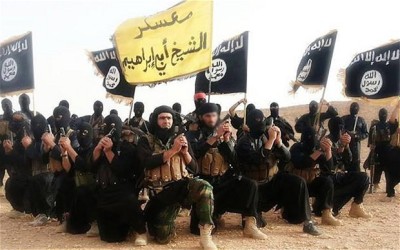 From Bin Laden to the Caliph: the final war against Islam (to knock out Eurasia)
From Bin Laden to the Caliph: the final war against Islam (to knock out Eurasia) 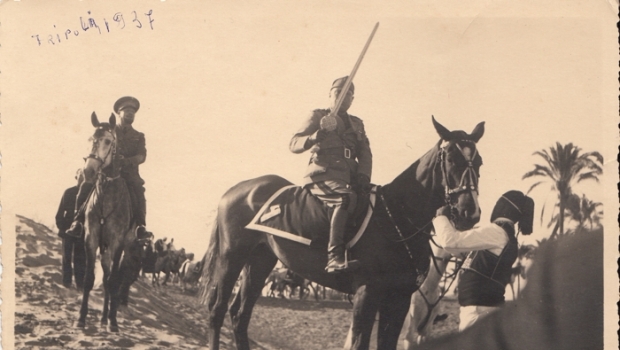 The mysterious object. The image of Islam in Italy in between the two World Wars
The mysterious object. The image of Islam in Italy in between the two World Wars 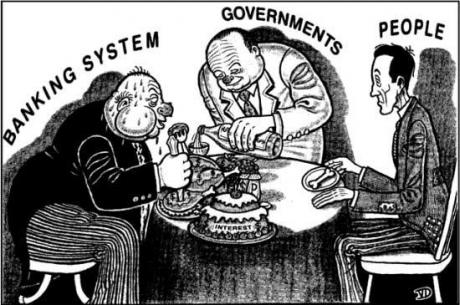 Economic globalization: “Swindlers of the world, unite!”
Economic globalization: “Swindlers of the world, unite!” 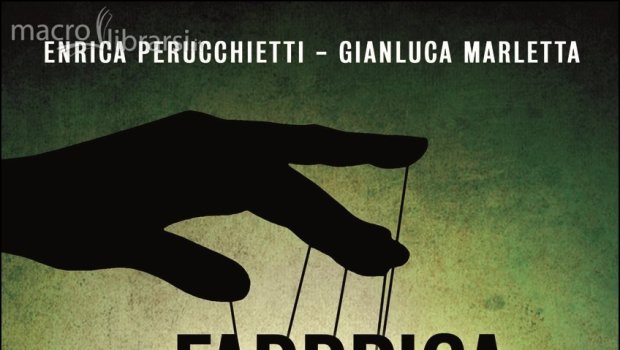 Enrica Perucchietti & Gianluca Marletta, The Factory of Manipulation, Arianna Publ., Bologna 2014
Enrica Perucchietti & Gianluca Marletta, The Factory of Manipulation, Arianna Publ., Bologna 2014 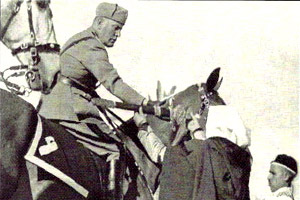 Fascism and Islam
Fascism and Islam 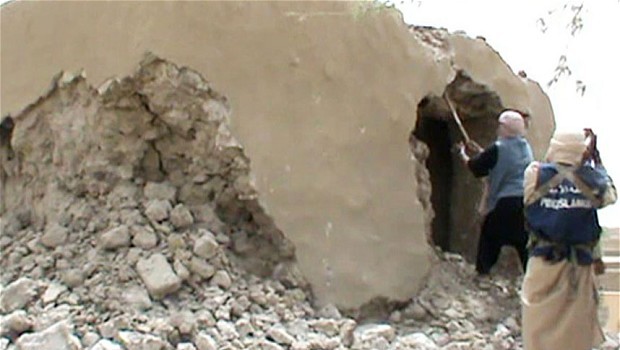 Who Manoeuvres the “Islamic Modernists”? A Focus on Libya
Who Manoeuvres the “Islamic Modernists”? A Focus on Libya